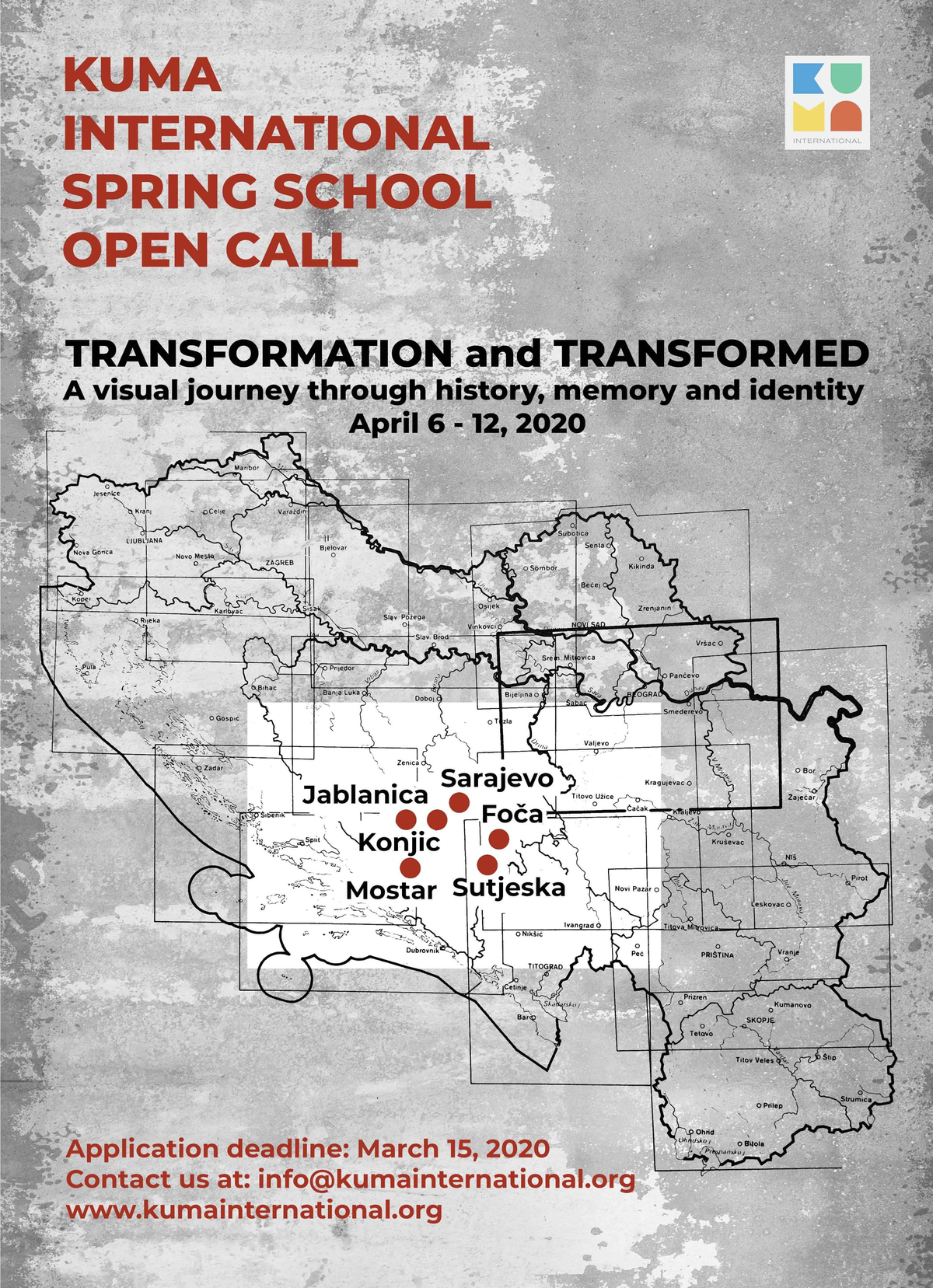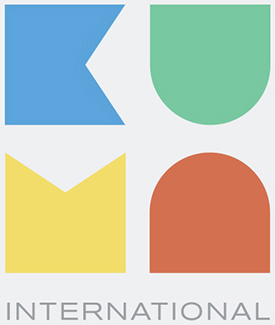
KUMA INTERNATIONAL SPRING SCHOOL
“TRANSFORMATION and TRANSFORMED”
A VISUAL JOURNEY THROUGH HISTORY, MEMORY AND IDENTITY
Due to the international COVID-19 emergency, Kuma International Spring School has been postponed to April 2021
In 2020, on the 25th anniversary since the end of the Bosnian war and the Srebrenica genocide in 1995, Kuma will launch a new educational program: Kuma International Spring School.
The theme of the first Kuma International Spring School is “transformation and transformed”. Exploring transformations of knowledge, territories, spaces, memories, truths, identities, societies and ideologies, the program centres around the notion that transformation is an integral part of the human condition and experience, and that by transforming ourselves we (trans)form our reality.
The participants will have the opportunity not only to get acquainted with local art history and architecture, and to increase their critical awareness and civic responsibility, but they will also immerse themselves in the cultural environment as a whole by being situated directly in the local places of past events and by meeting the protagonists (visual artists, researchers, art historians, architects, photographers, historians, etc.) of the local cultural scene.
The first Kuma International Spring School will begin in Sarajevo on April 6, 2020, one of the most significant dates of the history of the capital of Bosnia and Herzegovina. On April 6, 1945, Sarajevo was the scene of one of its greatest victories, the liberation from the Nazi occupation. Not even half a century later, on April 6, 1992, the city fell under a siege that lasted for 1425 nights. The remnants of both these historical events can be felt to this day. April 6 is simultaneously a day of celebration, a day of glory but it is also a day of sorrow, a day of mourning: Sarajevo Day. The first Kuma International Spring School will be launched on that day in Sarajevo before travelling to other important sites and places in Bosnia and Herzegovina. In seven days, the school will take its participants to visit different cities and museums, art galleries and monuments which interlink the various pasts of Bosnia and Herzegovina: from World War II to socialist Yugoslavia, the war of the 1990s and the present path to democracy and European integration.
